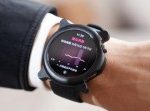Rehman Asad/Getty Images
- Companies are setting ambitious goals for increasing the use of recycled plastic, driving demand.
- Recycled polyester depends on the collection of plastic bottles, which fell during the pandemic.
- Supply constraints and higher prices could hurt sustainability pledges and long-term goals.
The clothing brand Patagonia was one of the first to start producing recycled polyester from plastic soda bottles back in 1993. The company, known for its industry-leading sustainability policies, has incorporated the recycled material into many of its items and said that 89% of the polyester in its latest season of products was made from recycled polyester.
But as companies like Coca-Cola, Nestle, and Adidas actively seek to reduce their use of virgin plastic as part of long-term efforts to be more sustainable and new regulatory policies for post-consumer resin, or PCR, made from plastic soda bottles kick in, demand is expected to exceed the available supply in the US and European Union, causing prices to rise.
The issues around recycled polyethylene terephthalate, or PET, highlight many of the business challenges that can accompany ambitious corporate sustainability goals that overlap with other organizations.
Companies urgently need to implement alternative processes and materials on a larger scale to reduce carbon emissions and limit global warming to 1.5 degrees Celsius. But implementing these new methods can be much more complicated than expected, even with the resources of a multinational company.
A versatile material
Recycled PET, commonly known as rPET, is a type of post-consumer plastic used to make several types of products. These include plastic bottles, food containers, carpets, recycled polyester fabric, industrial straps, construction materials, and furniture.
There are challenges to the wider adoption of rPET and criticisms about whether it is actually sustainable or helping greenwash companies like H&M. The environmental benefits of rPET include lower dependence on oil-based virgin plastic, less greenhouse-gas emissions, as well as less pollution.
Policies and promises are driving demand
Fabric and fibers were the primary end use for rPET until last year when the use of the material for bottles (for food, beverages, and other uses) grew by 32%. There was also a 10% increase in end-use consumption of rPET in the US and Canada, according to the most recent report from National Association for PET Container Resources.
This shift in use and demand followed announced commitments from several major companies to use less virgin plastic and increase recycling. In 2018, the beverage giant Coca-Cola Co. pledged to use 50% recycled material in its bottles and cans by 2030. The company also said it aimed to collect and recycle the volume of bottles equal to what it produces by the same year.
In early 2020, Nestle pledged to increase the amount of rPET used across its brands to 50% by 2025 and make all of its packaging recyclable or reusable by 2025. The parent company of Nescafe and Purina pet food uses 8% recycled content in its plastic water bottles now, so it will need to source and use a significantly higher amount to meet these goals.
Consumer goods and fashion companies like Unilever, Procter & Gamble, and Adidas have also made big promises about recycling and the increased use of recycled plastic. Nike’s chief sustainability officer, Noel Kinder, said the company’s volume of recycled polyester is already the equivalent of more than a billion plastic bottles a year.
The US states of California and Washington have also passed laws requiring certain items to have specific amounts of recycled plastic in their packaging.
Insufficient supply puts pressure on prices
Several challenges lie ahead for these plans and policies involving rPET. The recycling rate for plastic drink bottles in the US fell from 27.9% in 2019 to 26.6% in 2020, compared to 64% in Europe. NAPCOR’s report said this was due to pandemic-related closures of recycling and redemption centers, as well as disruption to curbside recycling programs.
To meet the recycling goals of US beverage brands, an estimated 1.1 billion pounds of food-grade rPET will be needed in the next decade — almost three times the amount produced in 2017.
Increases in demand also helped push the price of rPET higher than virgin plastic in early 2020, and rPET is now selling at a 20% premium, The Wall Street Journal reported. Higher costs of production due to rising energy costs were also a factor, according to S&P Global Platts.
A complicated future
One converter already expressed concern that some of the large companies will step back their sustainability pledges due to supply constraints, staff shortages, and these higher prices. Items made from recycled polyester will still shed plastic microfibers during washing. And while PET can be recycled at least 10 times, clothes made from rPET most likely won’t be recycled, especially if they are from fast-fashion retailers, whose items are often thrown out after only a few uses.
Powered by WPeMatico






